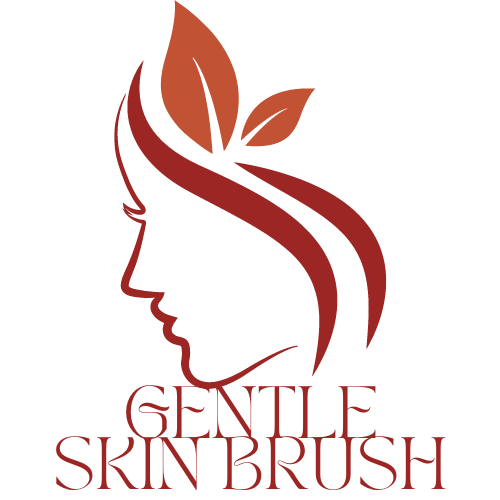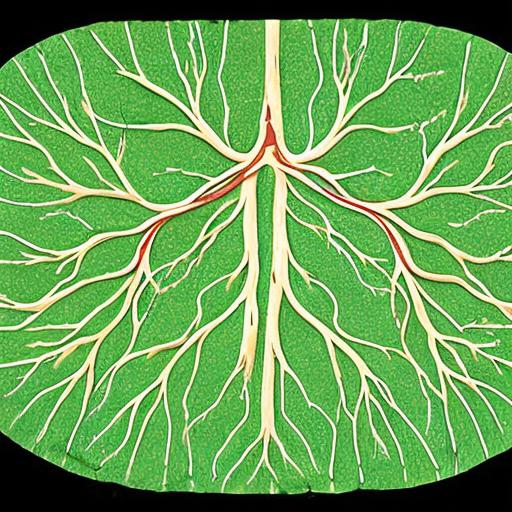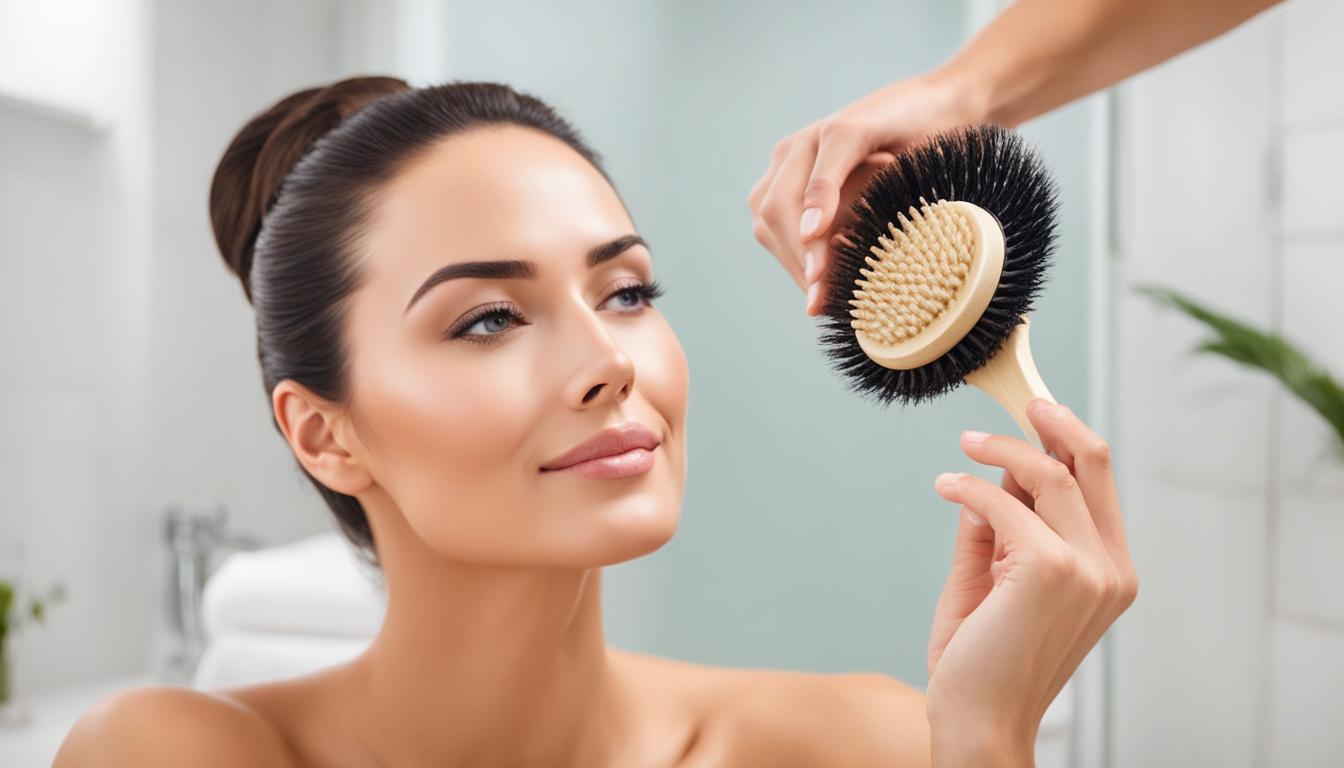Body brushing has gained popularity in the recent years as a natural wellness practice that promotes a range of health benefits. This ancient Ayurvedic technique involves brushing the body with a natural-bristled brush in long, sweeping motions, starting from the feet and moving towards the heart. This simple technique stimulates lymphatic drainage, promoting detoxification, and supports the body’s natural healing mechanisms.
The lymphatic system plays a vital role in our immune system, helping to eliminate toxins, waste, and other unwanted substances from our bodies. When this system becomes sluggish, it can cause a buildup of toxins in our tissues and organs, leaving us feeling tired, bloated, and susceptible to infections. Body brushing is an excellent way to keep the lymphatic system functioning optimally, promoting healthy circulation and a host of other physiological and psychological benefits.
In this blog post, we will explore the science behind body brushing, and how it impacts our immune system, metabolism, and overall well-being.
We will also look at the best techniques, tools, and tips for incorporating body brushing into your daily routine, so you can reap the benefits of this ancient self-care practice. Whether you’re looking to improve your skin health, reduce stress, or enhance your immunity, body brushing is an easy and effective way to achieve your wellness goals.
Contents
Brush skin in long, sweeping motions toward the heart to encourage lymphatic flow
There are many ways to take care of your skin. It is no surprise that we have our own routine and preferences. Some of us swear by face masks, while others swear by night creams. However, one practice that often goes overlooked is the act of dry brushing. Dry brushing refers to the process of using a dry brush on your skin in long, sweeping motions towards the heart to encourage lymphatic flow. Not only does this practice help with lymphatic drainage, but it also aids in removing dead skin cells and promoting circulation. Here are some step by step tips to make the most out of your dry brushing experience.
1. Choose the right brush: When it comes to dry brushing, it’s important to choose the right brush for your skin type. For sensitive skin, choose a brush with softer bristles, while for oily skin, choose a brush with stiffer bristles.
2. Start from the feet up: Begin brushing at your feet and make your way up towards your heart. Use long, sweeping motions in the direction of your heart to promote lymphatic drainage and circulation.
3. Be gentle: Although firm pressure is needed, it’s important to be gentle when dry brushing to avoid damaging your skin. Avoid brushing too hard or using circular motions.
4. Moisturize : After dry brushing, it’s important to moisturize your skin to avoid any dryness or irritation. Try using a natural oil like coconut or almond oil.
5. Don’t overdo it: It’s important to limit dry brushing to a few times a week to avoid irritating your skin. Overdoing it can also lead to inflammation.
Dry brushing is a quick and easy addition to your skincare routine that comes with excellent benefits. From improving lymphatic flow to promoting circulation and removing dead skin cells, this practice is a must-try. So why not give it a go and see how it can benefit your skin?
Use a natural bristle brush to avoid irritation and promote circulation
Using the right brush can be a game-changer when it comes to hair health. A natural bristle brush, made from boar or horse hair, is an excellent choice for promoting scalp circulation and preventing hair irritation. Not only can it make your hair feel softer and smoother, but it can also help stimulate hair growth and improve overall scalp health.
Why a natural bristle brush? Unlike synthetic brushes, a natural bristle brush has the ability to distribute the natural oils produced by your scalp throughout your hair. This can help keep your hair moisturized and nourished, which can lead to healthier hair in the long run. Additionally, the gentle massaging action of a natural bristle brush can help increase blood flow to your scalp, which can encourage hair growth and overall scalp health.
When it comes to using a natural bristle brush, there are a few key tips to keep in mind:
1. Invest in a high-quality brush. While natural bristle brushes tend to be more expensive than their synthetic counterparts, they are worth the investment in the long run. Look for a brush with bristles that are strong but also flexible, as this will allow them to detangle your hair without causing damage.
2. Be gentle when brushing. Even with a natural bristle brush, it’s important to be gentle when detangling your hair. Start at the ends and work your way up, using smooth and gentle strokes. This will help prevent breakage and damage to your hair.
3. Clean your brush regularly. To keep your brush in top condition, make sure to clean it regularly. Remove any loose hair from the bristles and wash the brush with warm water and gentle soap. Rinse thoroughly and allow the brush to air dry.
Overall, using a natural bristle brush is an excellent way to promote hair health and prevent irritation. By investing in a high-quality brush and being gentle when detangling your hair, you can enjoy the benefits of a natural bristle brush for years to come.
Start brushing at the feet and work upwards, including the stomach and armpits
Brushing your pet is an essential part of their grooming routine, and it helps to keep their coat healthy, shiny, and tangle-free. However, it can be a challenge to know where to start and how to do it effectively. That’s why we suggest starting at the feet and working upwards, including the stomach and armpits.
Here are some important key factors, details, and useful information to keep in mind:
1. Start with a good-quality brush or comb that is suitable for your pet’s coat type.
2. Begin brushing at the feet and work your way up towards the head, taking care to be gentle and avoid pulling on any tangles or knots.
3. Brush all the way around the body, including the stomach and armpits. These areas can be easily overlooked but are important for your pet’s hygiene.
4. Use a slicker brush or comb to detangle any knots or mats in the fur.
5. Don’t forget to brush your pet’s tail, as it can easily become tangled and uncomfortable for them if left unattended.
6. Take care around sensitive areas such as the eyes, ears, nose. Use a soft brush or your fingers to gently groom these areas.
7. Regular brushing can help to reduce shedding and keep your home free of pet hair.
8. Don’t forget to reward your pet with treats and praise for being well-behaved during the grooming process.
Grooming your pet successfully involves starting at the feet and working your way up, including the stomach and armpits. Use the right brush or comb for your pet’s coat type, be gentle and take care around sensitive areas, and reward your pet for good behavior. With regular grooming, your pet’s coat will be healthy, shiny, and tangle-free.
Conclusion
The science behind body brushing is fascinating, and it can have numerous health and wellbeing benefits for us. It can be beneficial to stimulate lymphatic flow by brushing our skin in long sweeping motions toward the heart, thereby promoting detoxification and enhancing our well-being.
Using a natural bristle brush is key to avoiding irritation and promoting healthy circulation while starting at the feet and working upwards toward the stomach and armpits can ensure we cover all the areas we need to. Incorporating body brushing into our daily routine can provide a simple yet effective way to improve our health and bring about lasting positive changes in our lives.
So why not try it out for yourself and see the difference it can make?





Leave a Reply